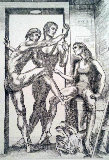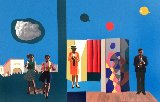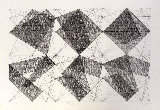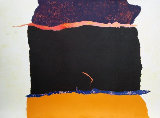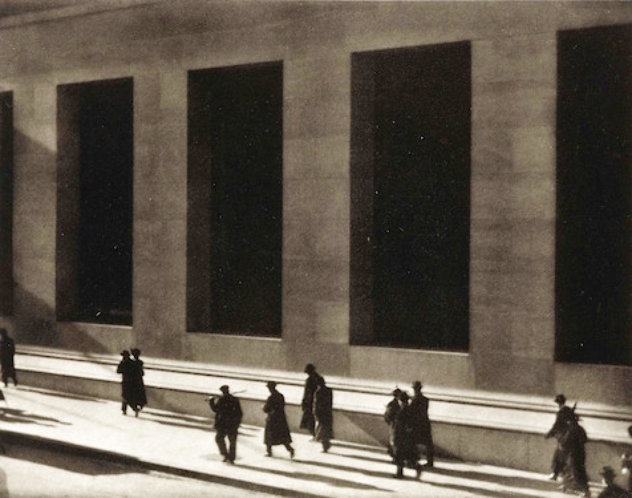



Wall Street, New York, 1916 Rare Photogravure
Paul Strand
Photography : Photogravure
Size : 5.25x6.5 in | 13x17 cm
Edition : Not numbered
Reduced
-
🔥Photogravure - Blue Chip $$$$$$$
Year1915
Not Signed
Condition Excellent
Not Framed
Purchased fromPrivate Collector 2000
Story / Additional InfoPhotogravure on Japan tissue from Camera Work, no. 48, 1916; image: 5 1/4 x 6 1/2 in on 11x14 paper
Photogravure on japan paper, from Camera Work No. 48, annotated on the reverse, image size 13.4 x 16.6 cm., sheet 28.1 x 20 cm, mounted and framed. An iconic image of Wall Street and a turning point in modern photography. Wall Street depicts a scene of everyday life in Manhattan's Financial District. Workers are seen walking past the J.P. Morgan building in New York City on the famous Wall Street, of which the photograph takes its name. The photograph is famous for its reliance on the sharpness and contrast of the shapes and angles, created by the building and the workers, that lead to its abstraction. This photograph is considered to be one of Strand's most famous works and an example of his change from pictorialism to straight photography. Strand moved from the posed to portraying the purity of the subjects. There is no focal point, with the lines converging off of the frame of the image. The financial building take majority of the frame. Emphasis is placed on the strong shapes created by the architecture of the building. The workers are included in the image, but are faceless and are trumped in size by the massive square shapes from the building they walk past. Also, the workers are captured in motion which on film makes them appear blurry. This aesthetic that Strand creates in Wall Street is his break toward the modern. Social change was important to Strand. With Wall Street, he sought to portray a social message. He captured the faceless people next to the looming financial building in order to give a warning. Strand shows 'the recently built J.P. Morgan Co. building, whose huge, dark recesses dwarf the passers-by with the imposing powers of uniformity and anonymity' (Ollman, Art Review: Paul Strand: A Transition, Caught on Film.) The people cannot escape the overwhelming power that this modern establishment will have on their future and the future of America. He warns us to not be the small people that look almost ant-like next to this building that has a massive amount of control over the American economy. The photo, now simply titled 'Wall Street', was one of six Paul Strand pictures Stieglitz published in Camera Work. In three of the six pictures, humanity strides out from abstract ideas, and each figure was a study in itself an irregular item complimented by modular formats that surround it. Another set of eleven Strand photos were published in the magazine's final issue in 1917, and those pictures, overwhelmingly endorsed by Stieglitz as 'brutally direct' made Strand's reputation.
Certificate of AuthenticityArt Brokerage
LID147067
Paul Strand - United States
Art Brokerage: Paul Stand American Photography Artist: b. 1890-1976. Paul Strand began photographing in New York in the 1910s. During the early 1920s he received recognition for both his painting and his photography. He visited New Mexico in 1926 and, beginning in 1930, returned for three consecutive summers, making portraits of artist friends and acquaintances. It was there, amidst a community of visual artists and writers, that Strand began to develop his belief in the humanistic value of portraiture. Strand subsequently traveled to Mexico, where he photographed the landscape, architecture, folk art, and people and in 1934 produced a film about fishermen for the Mexican government. Thirteen years earlier he had collaborated with Charles Sheeler on a film, Manhatta, a study of the urban high-rise environment. Having returned to New York late in 1934, Strand devoted his energies to theater and filmmaking cooperatives. In 1943 Strand resumed his still photography, focusing on the people and surroundings of New England. In the early 1950s he moved to Europe, spending six weeks in the northern Italian agrarian community of Luzzara and later traveling to the Outer Hebrides, islands off the northwest coast of Scotland. He traveled and photographed in North and West Africa in the 1960s. Listings wanted















